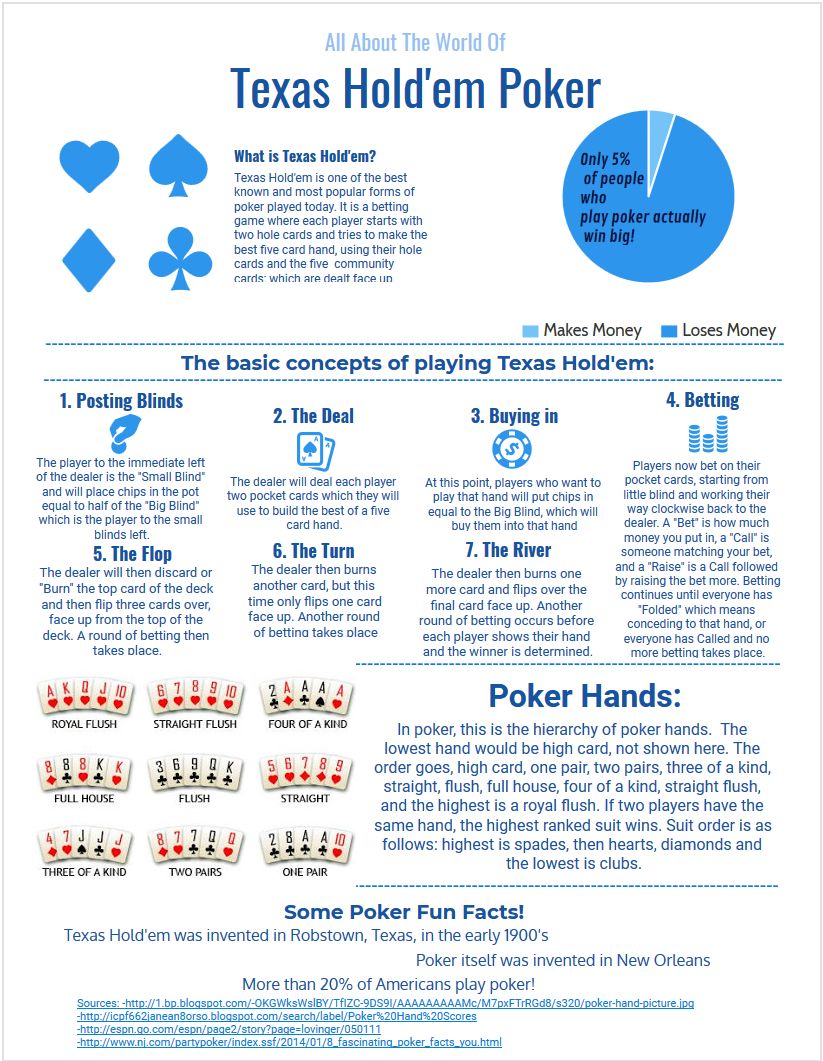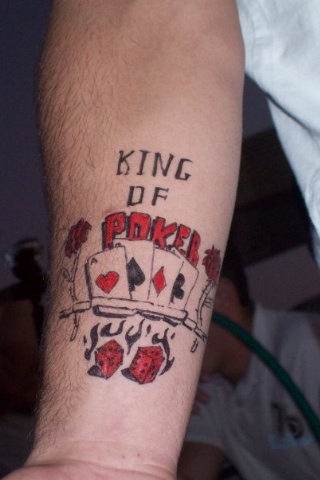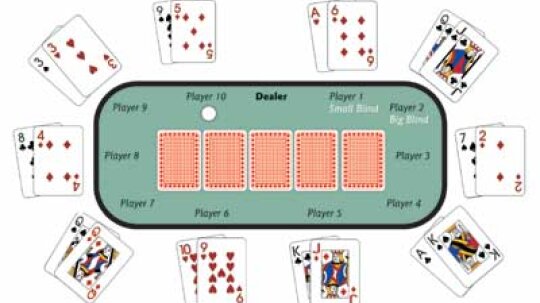Best Poker Hands Before The Flop

The next best hand that you can benefit from in Texas Hold'Em poker is a King and a Jack from the same suit. With a hand like this before the flop, stay in the game to see the flop, but do not bet if you can help it. The tenth best starting poker hand in Texas Hold'Em is an Ace, King combination where the Ace and King are from different. If you want to know which hands to play before the flop in No Limit Hold'em, and when to play them, download the free preflop guide below. No Limit Texas Hold'em Free Starting Hands Charts The Upswing Poker preflop guide makes it easy to play like a pro before the flop.
If you are a newbie to the game of Texas Holdem, you might be asking yourself why you should raise before the flop? It’s an important question to ask yourself, since there is significance to betting and raising in poker, which will inevitable have an impact on your win rate.
By knowing when to raise before seeing the flop, and knowing what you are trying to accomplish, it will be much easier to determine when you should be raising. So these are some of the main arguments in favor of raising pre flop.
Making a Raise for value
First and foremost, you should want to raise before the flop to get more value with your premium hands. This is a fundamental poker concept that should explain itself. If you think you have the best hand before the flop you want to try and build a bigger pot before you even see the flop, turn, and river.
Let’s say you hold a hand like TT+, AQ+. These are premium hands that you can be dealt pre flop and it’s extremely likely you have the best hand before the community cards have been dealt. So your goal is to raise before the flop to build a bigger pot so that you don’t give speculative hands a chance to just call and suck out on you.


Even when you are dealt AA and the best hand pre flop, you are the 80% favorite versus any other hands in holdem. Statistically, however, the value of the hand goes down drastically when there is more then one other caller seeing the flop. By raising with your big hands, it shows you have a strong hand, so fewer players are willing to call, giving yourself the best possible chance to win the hand against a weaker holding.
Raising to isolate weaker players
This is known as the isolation raise in no limit texas holdem. Generally hands that you would be raising from that position at the table are good enough to try and isolate with. If you have spotted a weaker player(s) at the table, then it will be profitable to isolate with a wider range against them, especially if they have a tendency to check/fold the flop a lot.
Usually the best time to raise to isolate an opponent is when a weaker player enters the pot by limping in. By raising a player who has already limped into the pot, you give yourself the opportunity to play against them in a heads-up pot. Raising for isolation can be hugely profitable, because weaker players tend to limp/call with too many hands, so when you have a made hand, you can just value bet them and win their stack.
Weaker players also tend to play in a very straightforward manner on the flop and on later streets. If they miss the flop, they will fold, or call when they catch a piece of the board. Because they are limp calling with such a wide range, they will be check folding the flop a good percentage of the time, so even when you miss the flop, a continuation bet will take down the pot most of the time. You have the advantage of continuation betting as a bluff because of your aggressive pre flop strategy.
Raising with the goal of stealing the blinds
Although the general pre flop strategy is to raise for value and isolate weaker players with your premium hands, another tactic worth exploring is the concept of stealing the blinds. Even though the opportunity doesn’t always present itself in loose/passive full ring poker games, sometimes the action will fold around to you in late position.
If you were in the cutoff or in the button and this happens, you never want to just call to see the flop, you should be looking to steal the blinds. Even if you do happen to get called, you get to act last post flop, giving you an inherent advantage over the other players. However, when playing against tighter players in the blinds, the raise in late position will take down the pot a lot of the time. Although it’s preferable to steal the blinds on the button, if the player on the button is passive, then it becomes more appealing to blind steal in the cutoff.
Raising with the goal of deception
This play is another strategy that can be incorporated into your poker game when playing against tougher opponents, although it’s not really required when playing against weaker players who will pay you off regardless. In tougher games, raising weaker hands such as T9s in early position to create an element of deception becomes more appealing because thinking players will be assigning you hand ranges of what hands they expect you to realistically raise from that position.
If you are playing hands they wouldn’t expect you to be playing, then they can’t play the hand optimally against you, so when the other player calls and makes a big hand on the flop, you will likely win all your opposition's chips when they have a decent hand, since they will not be putting you on that hand.
In summary, it becomes easier to know when to raise before the flop, when you have a purpose of what you’re hoping to achieve.
Betting before the flop can sometimes be a blind bet, because when the flop comes things can change drastically. What can seem like a clear advantage can turn into a trap when the Turn or River or Flop cards hit the poker games.
To calculate with which hand you have better chance against other hands, we have assembled the most common grouping of hands against other hands along with their chances of winning (all the way to the River).
Same Hand – ex. QJ vs. QJ
Can you guess the odds? That's right, 50%-50%. If it's suited vs. offsuit, the suited has the edge of course, a 2.5% advantage.
Pocket Pair vs. Two Overcards – ex. 99 vs. KQ
This is a close call. The pocket pair has a small advantage with 55 % to the two overcards' 45%. In the case of having a hand like QJ-suited the advantage is with this hand over a hand with a small pocket pair (55 or lower), because with the QJ you can still form a Straight without having the pair lower your chances of achieving it.
Pocket Pair vs. Smaller Pocket Pair – ex. AA vs. 88
The bigger pair has the advantage here, of course, with 80% to the lower pair's 20%.
Pocket Pair vs. Two Undercards – ex. KK vs. J9
The pair is the favorite with 80% to 20%. The two undercards have a chance of between 23% and 14%, depending on if they are suited and if the pocket interferes with their straight making ability or not.
Pocket Pair vs. Same Card & One Undercard – ex. KK vs. KQ

This can be a shifty situation. The Pocket Pair has the upper hand here (no pun intended) with about 85% to 15%, while in case the other pair is suited the odds change to 80% to 20% at best.
Pocket Pair vs. Same Card & One Overcard – ex. QQ vs. AQ
The advantage here is on the side of the pair with between 70% to 30% and 65% to 35%.
Best Poker Hands To Play Before The Flop
Pocket Pair vs. One Undercard & One Overcard – ex. JJ vs. KT
The odds here are similar to those of the hands above, with 70% to 30% in favor of the pair.
Two Undercards vs. Two Overcards – ex. AK vs. QJ
While the advantage here is clearly with the overcards – 65% to 35%, the odds change when the undercards are far enough from the overcards and suited without matching the overcards' suit, to around 60% to 40%.
Two Middle Cards vs. Undercard & Overcard – ex. KT vs. QJ
In this case, the edge is with the over/under cards. 60% to 40% which can be reduced to around 52% to 48% if it involves middle-suited connectors that are not of the same suit as the over/under cards and if there is no straight making interference.
Dominated with the Same High Card – ex. QJ vs. QT
The hand with the higher card has a big advantage with around 66.6% to 33.3%. This advantage starts to diminish as the kickers get lower due to split pot possibilities.
Dominated with the Same Low Card – ex. AQ vs. KQ
Best Poker Hands To Play Before The Flop
The hand with the higher card has a 66% advantage, while if it's a suited connector against unsuited cards that has a small chance of making a straight the higher kicker hand has a maximum advantage of 40%.